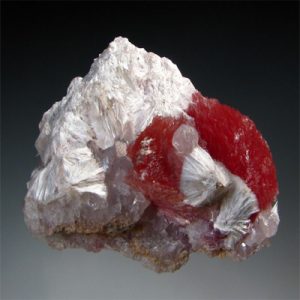Xonotlite: Gemstones Information
Xonotlite is a rare and fascinating mineral that belongs to the group of silicate minerals known as sorosilicates. It was first discovered in 1896 in Mexico and was named after the Xonotla mine in Veracruz. Xonotlite is primarily composed of calcium silicate with the chemical formula Ca6Si6O17(OH)2. It forms in high-temperature hydrothermal environments and is often associated with metamorphic rocks such as serpentinite and skarns.
Let’s explore the information and potential benefits associated with xonotlite:
Chemical Composition: Xonotlite is composed of calcium (Ca), silicon (Si), oxygen (O), and hydroxyl (OH) ions arranged in a complex crystal structure. Its chemical formula is Ca6Si6O17(OH)2. Xonotlite crystals typically occur as fibrous or acicular aggregates with a white to gray color and a silky or fibrous luster.
Physical Properties: Xonotlite crystals are often elongated and fibrous, resembling needles or fibers. It has a Mohs hardness of around 6 to 6.5, making it relatively hard compared to other minerals. Xonotlite is typically translucent to opaque and may exhibit a pearly or silky luster. It is commonly found in massive form, but well-defined crystals are also known to occur.
Occurrence: Xonotlite is commonly found in metamorphic rocks such as serpentinite and skarns, where it forms through the alteration of primary minerals by high-temperature hydrothermal fluids. Significant deposits of xonotlite have been discovered in various locations around the world, including Mexico, Italy, the United States, Japan, and Russia.
Industrial Applications: Xonotlite has limited industrial applications due to its rarity and relatively low abundance. However, it is sometimes used as a minor component in refractory materials, ceramics, and insulation products. Xonotlite-based materials may offer good thermal stability and resistance to high temperatures, making them suitable for use in applications where heat resistance is required.
Metaphysical Properties: In metaphysical and holistic healing practices, xonotlite is believed to possess various beneficial properties. It is often associated with promoting feelings of calmness, tranquility, and emotional balance. Xonotlite is said to have a soothing effect on the mind and body, helping to alleviate stress, anxiety, and negative emotions. Additionally, xonotlite is believed to enhance spiritual awareness, meditation, and inner reflection.
Collectibility: Xonotlite specimens are sought after by mineral collectors and enthusiasts for their rarity and unique crystal habits. Fine-quality xonotlite crystals, particularly those with well-defined fibers and attractive aesthetics, can command premium prices in the mineral market. Collectors often seek out xonotlite specimens from classic localities or those exhibiting rare crystal habits or associations with other minerals.
Environmental Considerations: Xonotlite is considered a low-toxicity mineral and does not pose significant environmental hazards. However, like all minerals, proper handling and disposal practices are necessary to minimize any potential environmental impact. Xonotlite mining activities are typically limited due to its rarity and the relatively small scale of its occurrences.
In summary, xonotlite is a rare and intriguing mineral with unique properties and potential benefits. Whether appreciated for its geological significance, collectibility, metaphysical properties, or industrial applications, xonotlite continues to captivate individuals around the world with its beauty, rarity, and versatility.





